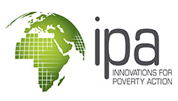
Text Reminders to Reach Financial Goals
Organization : Innovations for Poverty Action
Project Overview
Project Summary
Banks in Bolivia, Peru, and the Philippines sent monthly text message or mail reminders to clients, encouraging them to deposit money into their savings accounts.
Impact
Text message reminders from banks helped clients meet their savings goals.
Cost
Sending reminders by text message has near zero marginal cost.
Challenge
Providing access to savings accounts can help people save, but access alone does not alleviate all barriers to saving. Many people have trouble making regular deposits because they forget or put off saving until a future time, and then never follow through. Low-cost reminders about savings objectives can bring people’s intention top-of-mind, helping clients reach their savings goals.
Design
Three banks in Bolivia, Peru and the Philippines sent reminders to deposit money to clients who had recently opened a commitment or goal-based savings account. The accounts in each country were designed differently, but all featured some combination of the following:
- Savings goals – clients chose their own goal or picked from pre-determined options, for example, “for healthcare costs”
- Financial incentives – for example, higher interest rates or free insurance as a reward for making monthly deposits
- Commitment amounts – an amount of money that the client committed to saving (either a total or monthly amount)
- Commitment end date – after this date, clients were freed from the terms of their commitment
- Scheduled deposits – clients were given (usually monthly) due dates for deposits
- Restricted account access – this prevented clients from depleting their savings accounts before a specified time or goal was reached
Each bank sent reminder messages monthly, either by letter (Peru) or text message (Philippines and Bolivia). Some reminders mentioned a client’s savings goals, a financial incentive, or both a goal and an incentive.
In each country, some clients received messages that were phrased in terms of what they stood to gain…
You didn’t deposit in the 1st Valley Gihandom account for 30 days. Don’t forget to deposit, so you can reach your savings goal, make your dream come true!
And some clients got messages phrased in terms of what they stood to lose…
You didn’t deposit in the 1st Valley Gihandom account for 30 days. If you forget to deposit, you cannot reach your savings goal and make your dream come true!
Impact
Randomized evaluations in each country found that clients who were sent reminders had saved more and were more likely to have reached their savings goals by the commitment end dates (around a year after opening accounts) than clients who did not receive the messages. Although the savings gains weren’t very large, the SMS reminders were so inexpensive to administer that the approach is considered cost-effective.
What worked best?
- Messages that mentioned both a savings goal and a financial incentive helped clients save more than messages that only mentioned one or the other.
- Loss and gain phrasings were equally effective.
- Sending an additional reminder when a client was late for a deposit was just as effective as sending one regularly scheduled reminder.
Implementation Guidelines
Inspired to implement this design in your own work? Here are some things to think about before you get started:
- Are the behavioral drivers to the problem you are trying to solve similar to the ones described in the challenge section of this project?
- Is it feasible to adapt the design to address your problem?
- Could there be structural barriers at play that might keep the design from having the desired effect?
- Finally, we encourage you to make sure you monitor, test and take steps to iterate on designs often when either adapting them to a new context or scaling up to make sure they’re effective.
Additionally, consider the following insights from the design’s researcher:
- Work with clients who have already expressed an interest in saving. In the original evaluation, all participants had already opened a savings account with savings goals and commitment features; the study cannot speak to whether text message reminders would work for clients with other kinds of accounts or who do not have savings goals. IPA is currently conducting research to address this question.
- Send the messages monthly: There is no available data on whether more or less frequent messages have a different impact.
- Consider context: The Philippines, the SMS capital of the world, sends over 1.4 billion SMS each day. This means that a text message from one’s bank is no surprise; however, it also means that a single text is less likely to maintain salience than a text in a less media-dense culture. Try assessing client phone habits through surveys and focus groups before relying on SMS as a communication channel.
Cost effectiveness
Sending reminders by text message can be remarkably cost effective, as there are near-free methods for sending these texts. Costs you are likely to encounter include:
- Cost per SMS (provider-dependent, tend to reduce as number of SMS increases)
- Software costs. Some cloud-based platforms have minimal subscription fees. If developing an in-house solution, prepare for development and support costs.
- Personnel time for developing, testing, implementing, and monitoring text message campaigns.
Savings products used in this evaluation
In the Philippines, the accounts required clients to set their own goal amounts and end dates. Except in hardship cases, clients could only access funds after their specified end date, and after they had saved their goal amount.
In Peru, clients selected an end-date (between 6 months and 12 months post-opening), a minimum commitment amount to deposit each month, and a label that specified what they would spend the money on. If clients followed through on their commitments, the bank rewarded them with an annual interest rate of 8%, rather than the usual 4%.
In Bolivia, at sign-up, between January and March, clients chose a monthly minimum deposit amount; the commitment end-date for all clients was in December. Clients who made all of their committed monthly deposits received an interest rate of 6% (rather than the standard 3%) and received free life and accident insurance.
Features to look for in a messaging platform
The following criteria are considered essential for a well-implemented SMS campaign. When selecting a provider, we suggest using the following list as a starting point.
- Ability to schedule SMS campaigns in advance
- Ability to either: 1) upload a spreadsheet with custom SMS content for each client, or 2) complex contact and group management to assign contacts to the correct SMS campaigns.
- Ability to handle all ASCII characters (if using non-Latin alphabet, ability to handle Unicode characters).
- Automatic re-sending feature if initial failure (e.g., attempt to deliver message up to 3 times per phone number)
- Detailed delivery reports available on message success or failure (detailed error codes & number of attempts preferable)
- Average delivery success rate of at least 90% across all relevant networks.
- Ample message throughput capacity (e.g., 1,000 SMS per hour)
Several competitively-priced bulk messaging services are available for nearly any location, but any platform should be pilot-tested before implementation. The links below are current as of March 2016.
Message aggregators:
These services only provide SMS delivery at bulk costs to most telecoms. They have no user interface of their own, so most companies develop their own software to take advantage of their API. These international services provide the cheapest rates across countries; however, there are local aggregators in most countries that often offer lower rates.
- Nexmo (now Vonage) (https://www.nexmo.com) – Stable costs per message to all networks; inbound messages free. Needs separate front-end; accessed via API
- Twilio (https://www.twilio.com/) – Stable costs per message to all networks; offer a local presence. Needs separate front-end; accessed via API
Full-service platforms:
These providers offer a cloud-based user interface that allows for SMS campaigns of varying complexity. To send the message, they often utilize one of the aggregators listed above or allow for customized back-end integration. They usually offer delivery reports and rudimentary analytics.
- EngageSpark (http://www.engagespark.com) – For building and launching SMS and Voice Call alerts, surveys, reminders, educational curriculums, and on demand information campaigns. Designed to “enable anyone, anywhere to send key information and collect important data from any recipient with access to a phone.”
- VOTO Mobile (https://www.votomobile.org) – The VOTO Platform is a mobile phone notification and survey system that allows users to create and send calls from anywhere. No software installation or equipment required.
- Echo Mobile (https://www.echomobile.org) – Create interactive mobile experiences to communicate with users. Platform designed for data collection, notices and alerts, and other functions.
- FrontlineSMS (http://www.frontlinesms.com) – Frontline SMS has two primary software solutions. One, a downloadable standalone application, is designed for offline use and works through a local phone SIM connected to the computer. The other, called Frontline Cloud, is a cloud-based interface that combines with aggregators such as Nexmo & Twilio to form a full-featured solution.
Project Credits
Researchers:
Dean Karlan Contact Yale University
Margaret McConnell Harvard School of Public Health
Sendhil Mullainathan Harvard University
Jonathan Zinman Dartmouth University



